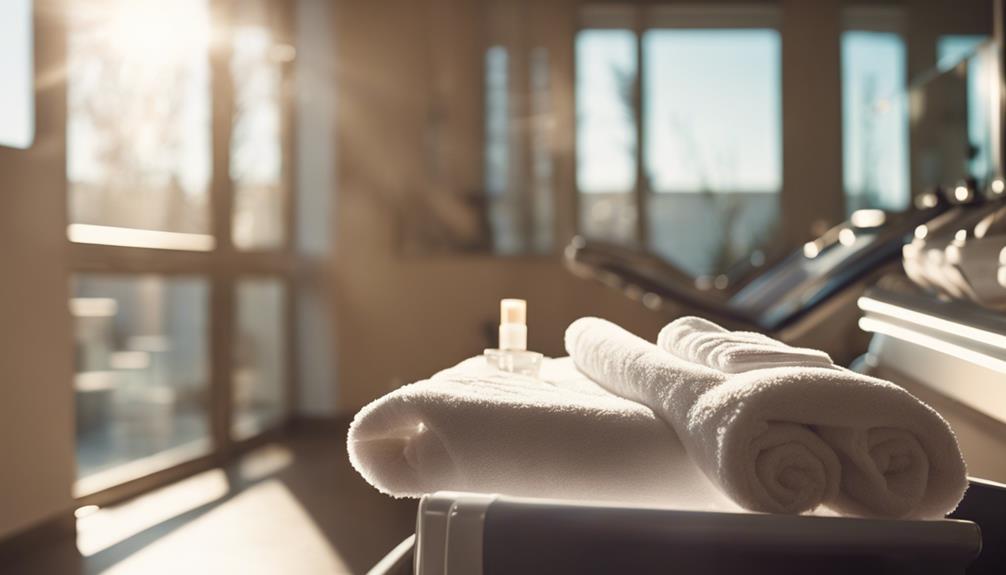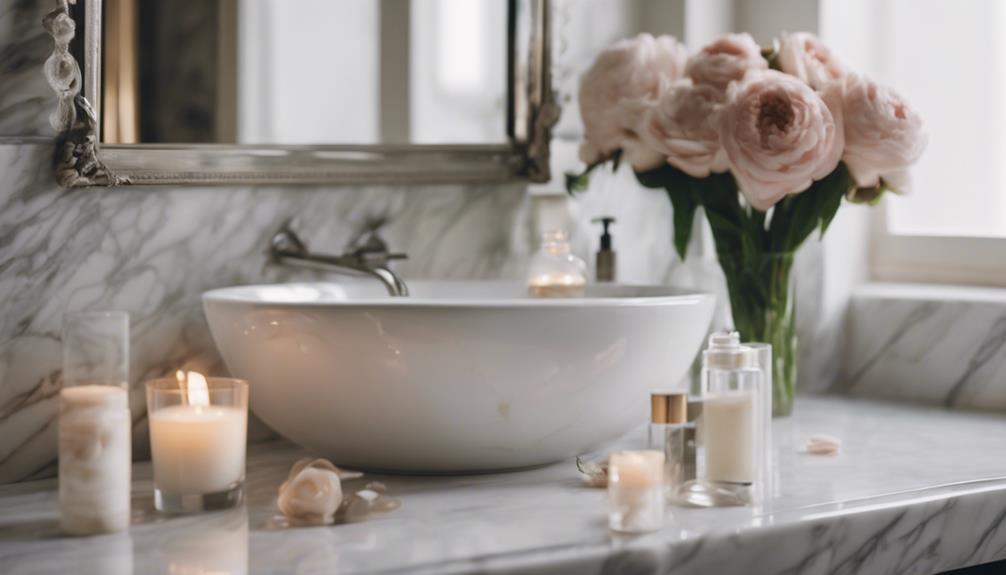To ensure your tanning beds remain in top condition, it is important to adhere to a strict cleaning and maintenance routine. After each use, clean the beds with hospital-grade disinfectants, paying close attention to high-touch areas such as handles and control panels. Remember to unplug the beds before cleaning to ensure safety. Regularly inspect UV shields and bulbs for any damage, replacing them as necessary. Conduct thorough inspections on a monthly basis and schedule professional maintenance every six months. Additionally, advise clients to prepare their skin by exfoliating and moisturizing before their tanning sessions. By following these important guidelines, you can guarantee a safe tanning experience and keep your beds in optimal condition—there is more to discover for superior care.
Key Takeaways
- Establish a daily cleaning routine, disinfecting high-touch areas and performing weekly deep cleans to maintain hygiene.
- Always unplug tanning beds before cleaning to ensure safety and prevent electric shock.
- Use hospital-grade disinfectants specifically designed for tanning beds, allowing them to sit for 60 seconds before wiping.
- Regularly inspect UV shields and bulbs, replacing them as needed to ensure optimal performance and safety.
Cleaning Protocols
Effective cleaning protocols are essential for maintaining hygiene and safety in tanning beds, guaranteeing a healthy experience for every client.
Start by establishing a routine cleaning schedule, including daily wipes and weekly deep cleans.
Make certain to use hospital-grade disinfectants specifically designed for tanning beds, following the mixing ratios on the labels.
Always unplug the tanning bed before cleaning to prevent electric shock.
Focus on high-touch areas, like handles and buttons, using microfiber cloths to avoid scratches.
Conduct monthly inspections to verify everything is in order.
Keep a log of your cleaning activities to track when the last clean was done and when the next is due, ensuring consistent maintenance and ideal hygiene for your clients.
Maintenance Procedures
After guaranteeing a thorough cleaning regimen, maintaining the tanning beds is key to maximizing their performance and longevity.
Regularly inspect UV shields for any cracks or discoloration, and replace them if necessary. Keep an eye on bulbs, as they usually need replacement every 800-1000 hours of use.
Don't forget to clean the ventilation systems to prevent overheating, which can shorten the bed's lifespan. Aim for professional maintenance every six months to catch any potential issues early.
Document all maintenance activities in a log to track when services are due. By following these procedures, you'll guarantee your tanning beds operate efficiently and remain safe for your clients.
Managing Tanning Lotions
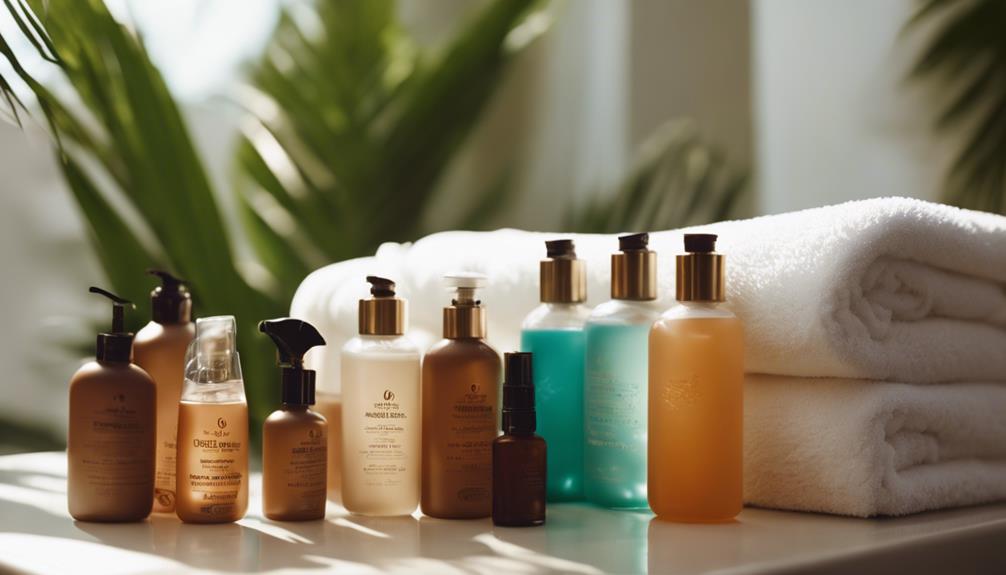
Managing tanning lotions properly is essential for maintaining the cleanliness and longevity of your tanning beds.
Always remove any lotion residues immediately after each session. Use cleaners specifically designed for this purpose, guaranteeing you follow the instructions for effectiveness.
Regularly incorporate a thorough cleaning routine to keep your beds fresh and free from buildup. Don't forget to focus on high-touch areas like handles and control panels, disinfecting them after every use.
Employ litmus paper to detect hidden residues that mightn't be visible. After applying disinfectants, wipe down surfaces with plush towels to eliminate moisture and prevent contamination.
Hygiene and Safety Practices
Proper hygiene and safety practices are essential to guaranteeing a clean and safe environment for clients using tanning beds. Follow these guidelines to maintain high standards:
| Practice | Description |
|---|---|
| Clean After Every Use | Disinfect all surfaces and high-touch areas promptly. |
| Use Proper Cleaners | Choose hospital-grade disinfectants tailored for beds. |
| Dry Thoroughly | Ascertain tanning beds are completely dry post-cleaning. |
| Inspect Regularly | Check for damage on UV shields and bulbs frequently. |
| Maintain Logs | Keep records of cleaning and maintenance activities. |
Client Protection Essentials
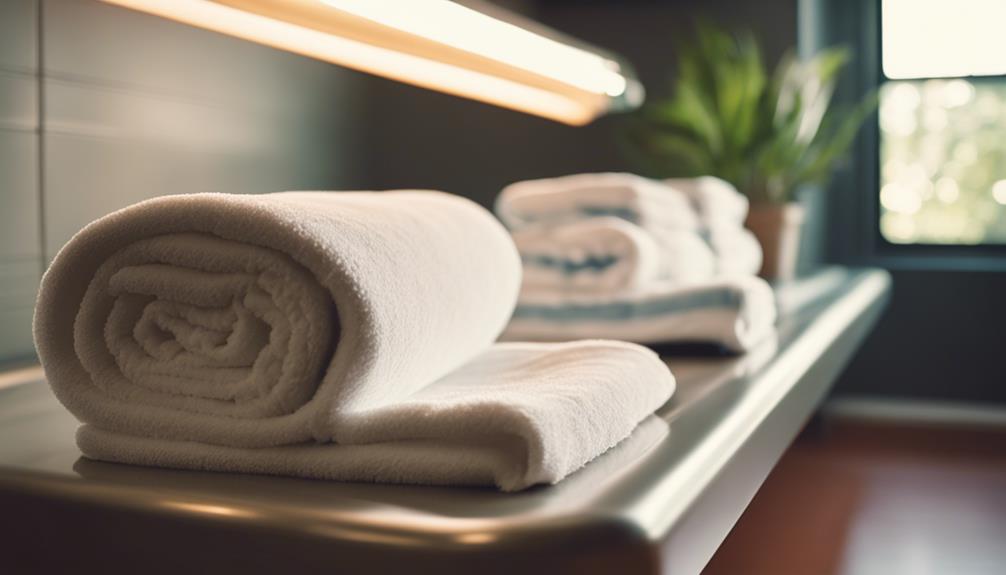
Ensuring client protection during tanning sessions is essential for safeguarding skin health and enhancing the overall tanning experience.
First, always provide clients with high-quality eye protection, like goggles with 100% UV protection, to avoid potential damage.
Next, encourage proper skin preparation by advising clients to exfoliate 24 hours before their session and to moisturize without using oil-based products.
Also, recommend they shave or wax at least a day in advance to prevent irritation.
For facial protection, offer tanning bed face covers that fit comfortably and securely.
Remind clients to conduct patch tests for allergies when trying new products.
Equipment Inspection Guidelines
Regular equipment inspections are essential for maintaining tanning beds and guaranteeing they operate safely and effectively for clients. By following these guidelines, you can help keep your tanning beds in top condition:
- Inspect UV Shields: Check for cracks or discoloration and replace damaged shields to maintain safety.
- Monitor Bulb Performance: Regularly inspect bulbs and replace them as recommended, usually after 800-1000 hours of use.
- Check Ventilation Systems: Confirm the ventilation systems are clean and functioning properly to prevent overheating.
- Maintain a Log: Keep a detailed maintenance log to track inspections, replacements, and professional servicing, ensuring nothing gets overlooked.
Effective Disinfection Methods
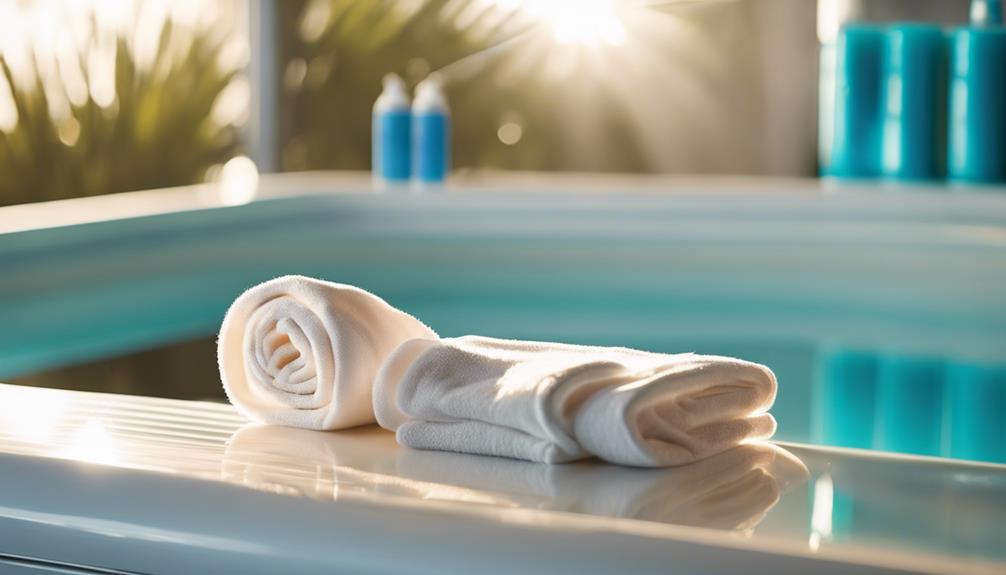
To effectively disinfect tanning beds, use hospital-grade disinfectants specifically formulated for the unique surfaces and equipment found in salons.
Make certain to unplug the tanning bed before you start cleaning to avoid any electric shock hazards.
After each client, focus on high-touch areas like handles and control panels.
Utilize microfiber cloths for wiping down surfaces to prevent scratches on acrylic.
Be diligent about following the mixing ratios on product labels for the disinfectants to maximize effectiveness.
Allow the disinfectant to sit for at least 60 seconds before wiping it off, guaranteeing thorough sanitization.
Skin Preparation Tips
Exfoliate your skin 24 hours before tanning for the best results, as this helps create an even surface for the tanning process. Proper skin preparation will enhance your tanning experience and guarantee a gorgeous glow.
Here are some key tips to follow:
- Moisturize: Keep your skin hydrated with a non-oily moisturizer to prevent dryness.
- Avoid Oils: Skip lotions containing oils or fragrances, as they can inhibit tanning.
- Patch Test: If using a new product, conduct a patch test for allergies at least 48 hours prior.
- Hair Removal: Shave or wax at least 24 hours before tanning to avoid irritation.
How Can I Ensure a Pristine Tanning Bed Experience Without the Risk of Burns?
When using a tanning bed, following essential tips for tanning bed burns is crucial. Start with a lower exposure time, gradually increasing it. Always wear protective eyewear and use indoor tanning lotions to avoid burns. Regularly clean the bed to ensure proper functioning and a safe, effective tanning experience.
Conclusion
By following these essential tips for maintaining pristine tanning beds, you not only elevate client satisfaction but also guarantee their safety.
Did you know that a clean tanning bed can reduce the risk of skin infections by up to 80%? This statistic highlights the importance of your cleaning protocols and hygiene practices.
With a commitment to excellence, you can create a welcoming environment that sets your salon apart, giving clients a first-rate tanning experience they'll want to return to!

